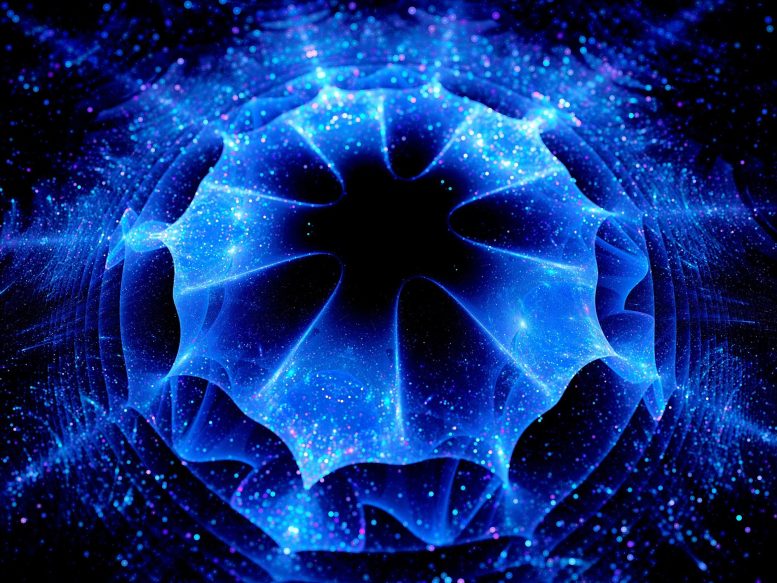Los científicos han observado un estado cuántico inusual de la materia por primera vez.
El físico Andrea Bianchi ha observado el estado de «líquido de espín cuántico» en un material magnético creado en su laboratorio.
No todos los días alguien descubre un nuevo estado de la materia en la física cuántica, el campo científico dedicado a describir el comportamiento de las partículas atómicas y subatómicas para comprender sus propiedades.
Sin embargo, eso es exactamente lo que hizo un equipo internacional de investigadores. El equipo incluye a Andrea Bianchi, profesor de física en la Universidad de Montreal e investigador del Reagrupamiento de Materiales Avanzados de Quebec, y sus alumnos Avner Fitterman y Jérémi Dudemaine.
En un artículo reciente publicado en la revista científica Exploración física XLos científicos documentan un «estado fundamental líquido de espín cuántico» en un material magnético creado en el laboratorio de Bianchi: esto2Zr2O7un compuesto compuesto de cerio, circonio y oxígeno.
Como un líquido encerrado en un sólido extremadamente frío.
En física cuántica, el espín es una propiedad interna de los electrones relacionada con su rotación. Es el espín lo que le da al material de un imán sus propiedades magnéticas.
En algunos materiales, el giro da como resultado una estructura desorganizada similar a la de las moléculas en un líquido, de ahí el término «líquido de giro».
En general, un material se vuelve más desorganizado a medida que aumenta su temperatura. Este es el caso, por ejemplo, cuando el agua se convierte en vapor. Pero la característica principal de los líquidos de centrifugado es que permanecen desorganizados incluso cuando se enfrían tan bajo como[{» attribute=»»>absolute zero (–273°C / –459.67°F).
Spin liquids remain disorganized because the direction of spin continues to fluctuate as the material is cooled instead of stabilizing in a solid state, as it does in a conventional magnet, in which all the spins are aligned.
The art of “frustrating” electrons
Imagine an electron as a tiny compass that points either up or down. In conventional magnets, the electron spins are all oriented in the same direction, up or down, creating what is known as a “ferromagnetic phase.” This is what keeps photos and notes pinned to your fridge.
But in quantum spin liquids, the electrons are positioned in a triangular lattice and form a “ménage à trois” characterized by intense turbulence that interferes with their order. The result is an entangled wave function and no magnetic order.
“When a third electron is added, the electron spins cannot align because the two neighboring electrons must always have opposing spins, creating what we call magnetic frustration,” Bianchi explained. “This generates excitations that maintain the disorder of spins and therefore the liquid state, even at very low temperatures.”
So how did they add a third electron and cause such frustration?
Creating a ménage à trois
Enter the frustrated magnet Ce2Zr2O7 created by Bianchi in his lab. To his already long list of accomplishments in developing advanced materials like superconductors, we can now add “master of the art of frustrating magnets!”
Ce2Zr2O7 is a cerium-based material with magnetic properties. “The existence of this compound was known,” said Bianchi. “Our breakthrough was creating it in a uniquely pure form. We used samples melted in an optical furnace to produce a near-perfect triangular arrangement of atoms and then checked the quantum state.”
It was this near-perfect triangle that enabled Bianchi and his team at UdeM to create magnetic frustration in Ce2Zr2O7. Working with researchers at McMaster and Colorado State universities, Los Alamos National Laboratory, and the Max Planck Institute for the Physics of Complex System in Dresden, Germany, they measured the compound’s magnetic diffusion.

A sample of the frustrated cerium-based magnet, Ce2Zr2O7, designed in Andrea Bianchi’s lab. Credit: University of Montreal
“Our measurements showed an overlapping particle function—therefore no Bragg peaks—a clear sign of the absence of classical magnetic order,” said Bianchi. “We also observed a distribution of spins with continuously fluctuating directions, which is characteristic of spin liquids and magnetic frustration. This indicates that the material we created behaves like a true spin liquid at low temperatures.”
From dream to reality
After corroborating these observations with computer simulations, the team concluded that they were indeed witnessing a never-before-seen quantum state.
“Identifying a new quantum state of matter is a dream come true for every physicist,” said Bianchi. “Our material is revolutionary because we are the first to show it can indeed present as a spin liquid. This discovery could open the door to new approaches in designing quantum computers.”
Frustrated magnets in a nutshell
Magnetism is a collective phenomenon in which the electrons in a material all spin in the same direction. An everyday example is the ferromagnet, which owes its magnetic properties to the alignment of spins. Neighboring electrons can also spin in opposite directions. In this case, the spins still have well-defined directions but there is no magnetization. Frustrated magnets are frustrated because the neighboring electrons try to orient their spins in opposing directions, and when they find themselves in a triangular lattice, they can no longer settle on a common, stable arrangement. The result: a frustrated magnet.
Reference: “Case for a U(1)p Quantum Spin Liquid Ground State in the Dipole-Octupole Pyrochlore Ce2Zr2O7” by E. M. Smith, O. Benton, D. R. Yahne, B. Placke, R. Schäfer, J. Gaudet, J. Dudemaine, A. Fitterman, J. Beare, A. R. Wildes, S. Bhattacharya, T. DeLazzer, C. R. C. Buhariwalla, N. P. Butch, R. Movshovich, J. D. Garrett, C. A. Marjerrison, J. P. Clancy, E. Kermarrec, G. M. Luke, A. D. Bianchi, K. A. Ross and B. D. Gaulin, 20 April 2022, Physical Review X.
DOI: 10.1103/PhysRevX.12.021015
También te puede interesar
-
La NASA Juno ve un lago de lava liso como el cristal en la luna Io de Júpiter
-
Llame a fotógrafos y astrónomos de Wicklow para obtener fotografías extraordinarias
-
Cómo el pensamiento visuoespacial mejora la comprensión de la química | Noticias
-
La cápsula Starliner da un gran paso hacia el primer vuelo tripulado
-
Los satélites Tiandu de China realizan experimentos de transmisión y enrutamiento Tierra-Luna_China.org.cn




